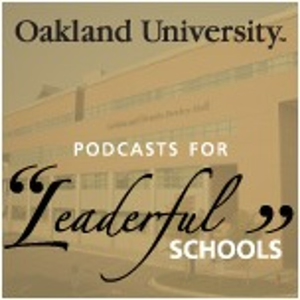
How Instructional Rounds optimize learning for teachers and students
Podcast for Leaderful Schools01/27/22 • 32 min
Vicki Wilson, the principal of the Monroe Elementary School in the Wyandotte, Michigan School District, and author of Lead with Instructional Rounds: Creating a Culture of Professional Learning, shares her views on why and how and when you use instructional rounds to both create a culture for learning, as well as support the teachers' learning.
Vicki Wilson recounted some of the experiences that shaped her approach as a school administrator and very passionate advocate for learning for both children and adults. As a fourth grade teacher, “I wasn't expecting the depth of the relationship that I had with students as individuals, but also that you have just with your class as a whole and the community that you build and the culture that you build. So that was the first thing that shaped me, is that realizing that it's so much more than sharing content with kids so that they learn it but it is about community and culture and family and getting to know each other."
The second experience Vicki Wilson recalled was as a principal in a school where she had been working previously. She visited the classrooms of teachers she knew and with whom she had taught and using a wider lens, “I realized that as I went into everybody's classroom I saw strengths that I did not know that they had and that changed me and shaped me dramatically. And I started to think about how can we leverage these strengths that are in classrooms.”
Moving beyond her walls and community and becoming an educational leader was the third experience that came later in her career as a principal. She became more connected, "reaching out beyond her district and joining the Michigan Elementary and Middle School Principals’ Association (MEMSPA) state association and building a professional learning network, getting active on Twitter and eventually writing a book."
The instructional rounds approach that staff took at Monroe Elementary School was to examine different research and best practices. “The research out of Harvard supporting ten minute visits with reflection and debriefing was a structure that felt good to us. We also like the work that Marzano discusses to be reflective educators, using the opportunities to observe colleagues to reflect on the practices you have in your classroom and think about them. Are you getting the impact that you want out of the class, out of those techniques that you're learning? Lastly we just wanted to strengthen our culture, so we looked at the research out of Gallup about strength-based employee feedback and how that contributes to greater gains. So, we made sure that we were very positive in the way we go about instructional rounds, and we talk about the positive impact that we're seeing with our kids.”
“We define it like this: instructional rounds is a process for educators, in small collaborative groups, to observe their colleagues teaching while reflecting on their own practices, followed by dialogue about the effective instruction and the impact on learning. I do believe that when adults learn more, students learn more also, and that was one piece that was really important. Are we growing ourselves as adults and knowing that there are strengths in all these other classrooms, how can we take that opportunity to do that? I don't believe we learn to our potential when we're in isolation as teachers, so how do we break down that isolation so that we can learn more?”
“To create a culture for learning for students and the adults in the school, it has to be safe for the adults to jump in and do it. You’ve got to put so much into the safety piece so that everyone can apply and compare and reflect and learn and process. It's really important for the leader to be involved in this work whether the leader's the facilitator or not. The principal needs to participate in the professional learning with their teachers and that in itself has an effect size of point eight four.“
“Teachers going on the rounds are in a deep reflective mind. They're walking in, they're observing, they're thinking about what they do with their students, and they're looking at what this person's doing. They're thinking about what we've learned about for best practices, rigor, and student success. As facilitator, my job is to step out with this group of teachers to talk about teaching and learning. I pose two strong reflective questions that will create some dialogue and discussion around the best practices we saw, the way the teacher executed it, that work that was positive and the impact that was having on the students. The teacher whose classroom we observed will get their feedback later.Upon completion of the rounds the staff that observed classrooms will write a note card to each of the teachers that we visited that validates a practice that they used with some very specific positive details and what we took away from it. The host teachers will receive five-six note cards in their mailbox tha...
01/27/22 • 32 min
Generate a badge
Get a badge for your website that links back to this episode
<a href="https://goodpods.com/podcasts/podcast-for-leaderful-schools-521411/how-instructional-rounds-optimize-learning-for-teachers-and-students-67928990"> <img src="https://storage.googleapis.com/goodpods-images-bucket/badges/generic-badge-1.svg" alt="listen to how instructional rounds optimize learning for teachers and students on goodpods" style="width: 225px" /> </a>
Copy